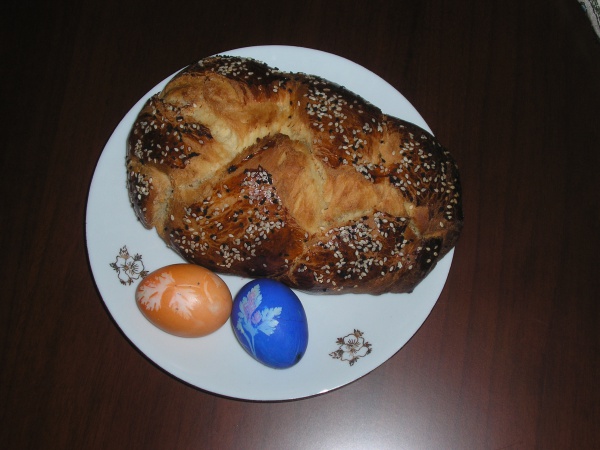Facts About Tsoureki
Tsoureki, also known by various names such as شوريك, choreg, çörək, kozunak, cozonac, or paskalya çöreği, is a sweet and delightful holiday bread. Made from flour, milk, butter, and sugar, often enhanced with flavors like orange zest, mastic resin, or mahlab, this bread is a beloved treat in many cultures, including Greek, Turkish, Armenian, and other Middle Eastern traditions.
In Greek tradition, different versions of Tsoureki are crafted for various holidays. For instance, Christopsomo is prepared for Christmas, lampropsomo for Easter, and vasilopita for New Year's Day. The term "Tsoureki" itself originates from the Turkish word "çörek" with linguistic ties to Old Turkish, Persian, or Armenian languages.
As a key part of Greek Easter celebrations, Tsoureki often features red-dyed eggs nestled into the dough before baking. Similarly, in Armenian culture, a variant known as cheoreg is popular, which is sometimes made in smaller portions with hidden objects inside for good luck.
In Turkey, this bread is known as paskalya çöreği, where the dough may incorporate eggs rather than having them pressed into it. Turkish recipes might also include ingredients such as oil, margarine, orange zest, vanilla, and almonds, adding a unique twist to the bread. Tsoureki is often exchanged as a gift during special occasions like Easter, where children might present it to their godparents.
Christopsomo, or Christ's bread, is a special Greek Christmas bread. It features a mixture of dried fruits, spices, and nuts within the dough. The loaf is beautifully adorned with whole walnuts, sesame seeds, slivered almonds, and a cross-shaped design, with a syrup made from honey, orange juice, and almonds adding a delightful glaze.
Tsoureki and its variations are more than just delicious treats; they hold deep cultural significance across different regions. They reflect the rich culinary traditions and customs associated with holidays and special occasions, making them a cherished part of festive celebrations.

 United Kingdom
United Kingdom